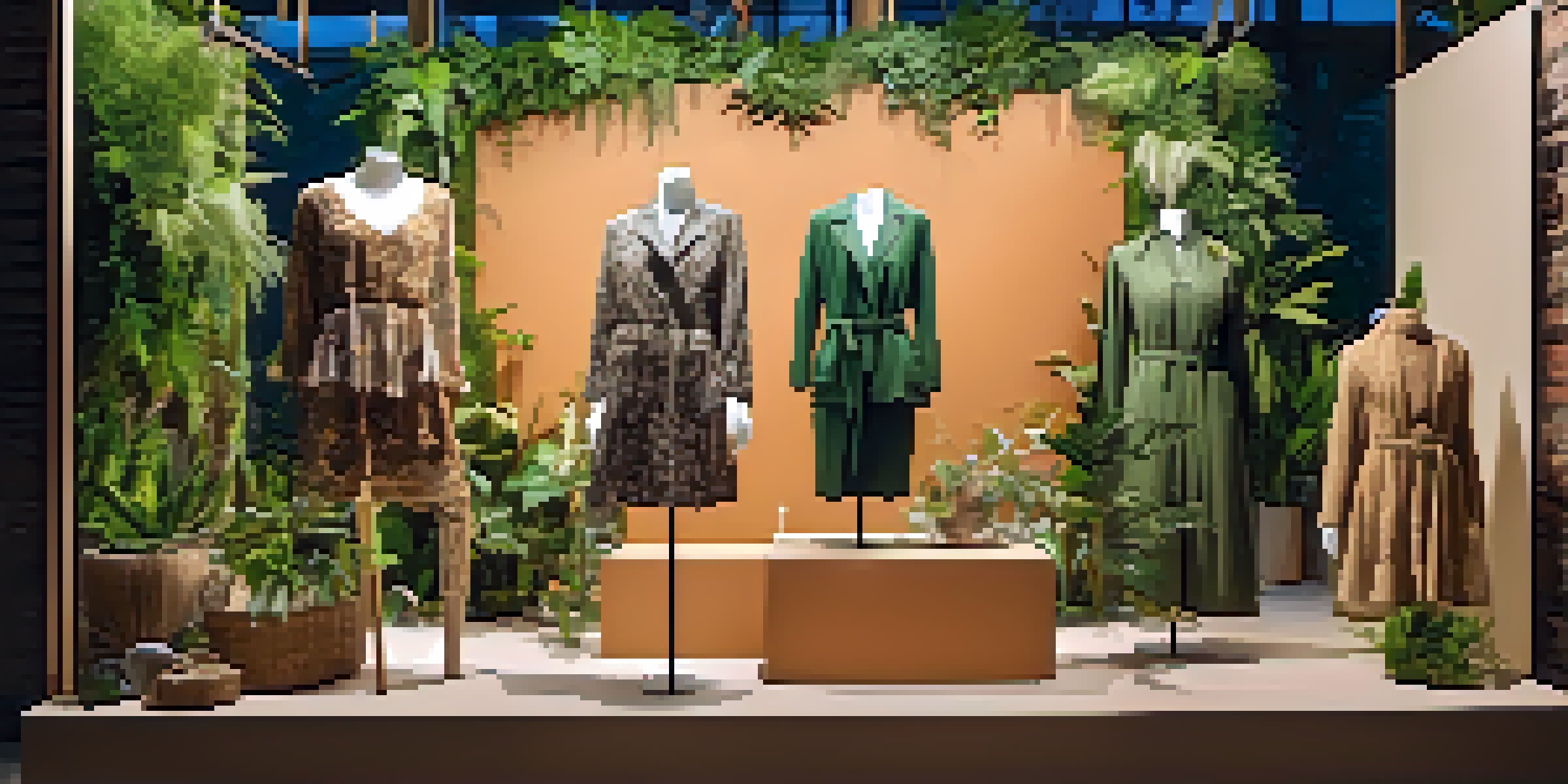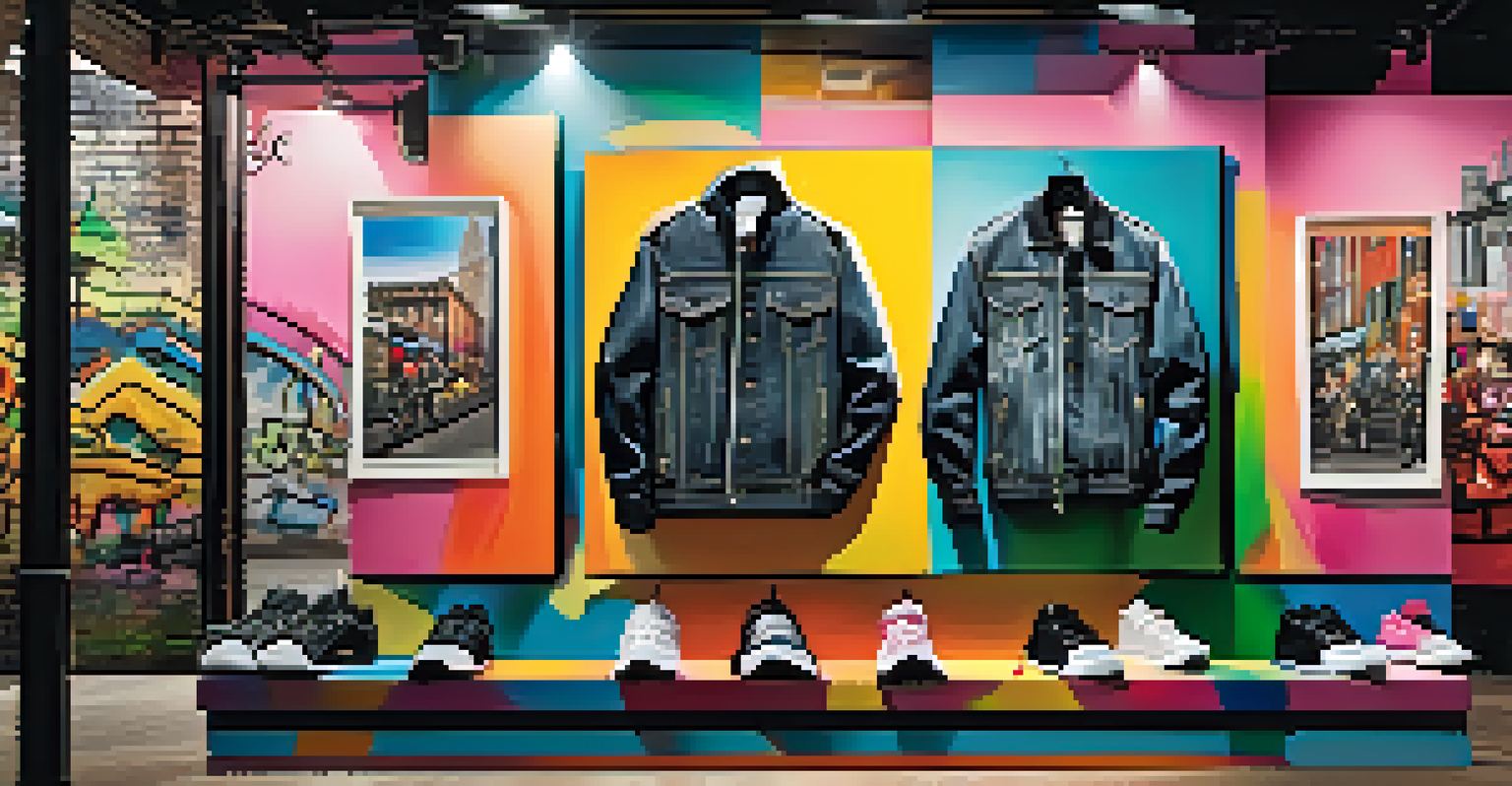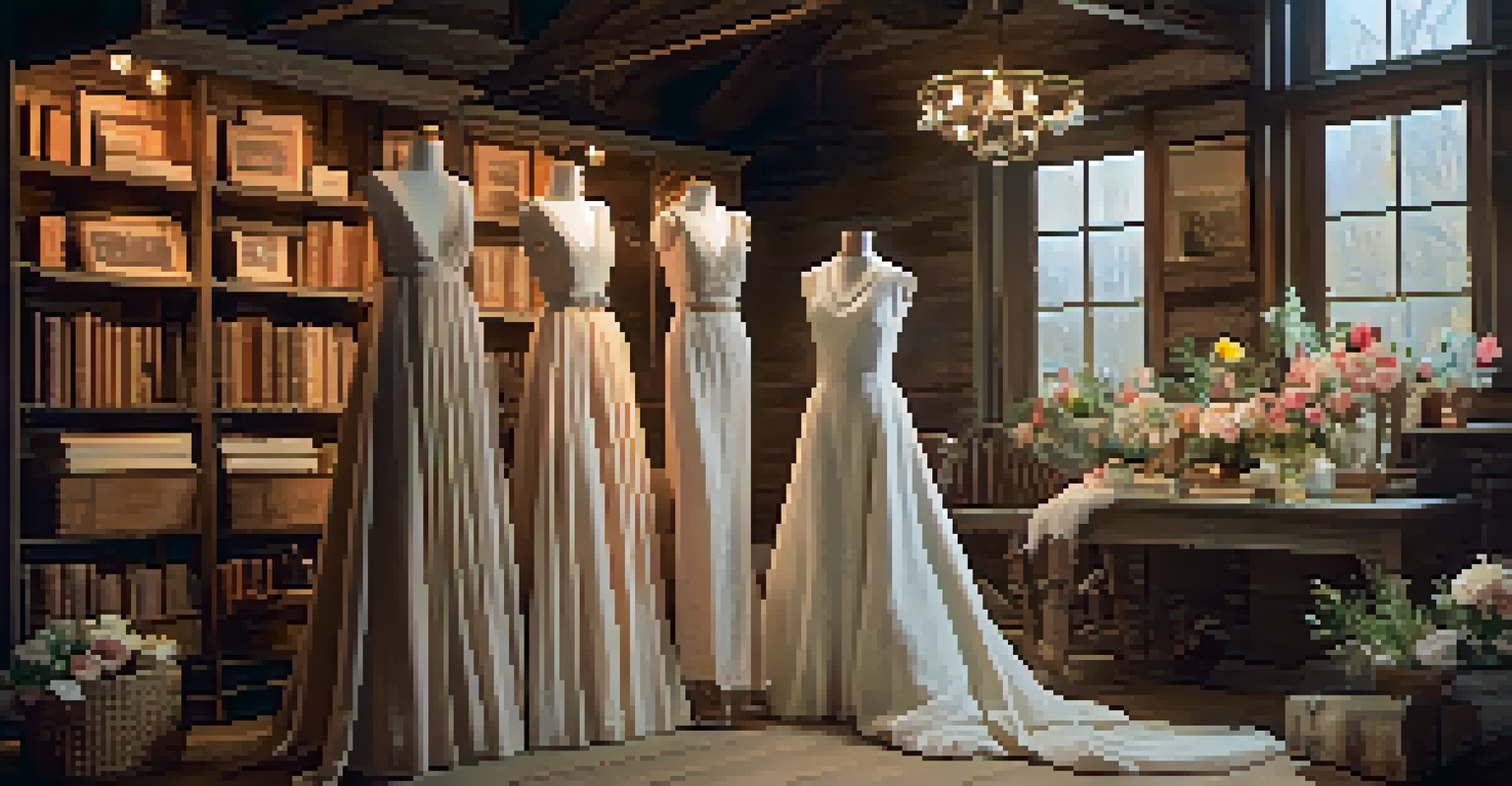Storytelling in Fashion Displays: Captivating Customer Interest

The Power of Storytelling in Fashion Retail
Storytelling has long been recognized as a powerful tool in marketing, and fashion is no exception. When customers walk into a store, they aren't just looking for clothes; they’re seeking an experience. A well-crafted story can evoke emotions, create connections, and ultimately influence buying decisions.
People will forget what you said, people will forget what you did, but people will never forget how you made them feel.
In fashion displays, storytelling transforms a simple product into a narrative that resonates with customers. Imagine a window display that transports you to a sun-soaked beach, complete with vibrant swimwear and tropical props. This immersive approach not only captivates attention but also invites customers to visualize themselves in the scenario.
By weaving narratives into their displays, brands can highlight their values, history, or the craftsmanship behind their products. This deeper engagement fosters loyalty and encourages customers to return, making storytelling an essential aspect of modern retail strategy.
Crafting a Compelling Narrative
To create an engaging story in fashion displays, start by identifying the core message you want to convey. This could be anything from sustainability to a celebration of cultural heritage. Once you have that message, think about how to visually represent it through color, layout, and product selection.

For instance, a brand focusing on eco-friendly fashion might use natural materials and earthy tones in their display. Incorporating elements like recycled materials or plants can reinforce the narrative and attract like-minded customers. This approach not only tells a story but also aligns with the values of the target audience.
Storytelling Enhances Customer Experience
A well-crafted narrative transforms fashion displays into engaging experiences that resonate with customers.
Additionally, consider using customer personas to tailor your narrative. By understanding the aspirations and preferences of your audience, you can create a story that feels personal and relatable, enhancing the overall shopping experience.
Visual Elements That Enhance Storytelling
Visuals are crucial in storytelling, especially in fashion displays where aesthetics reign supreme. Use striking imagery, unique props, and cohesive color palettes to draw in customers. Each element should serve a purpose in the narrative, making it easier for shoppers to connect with the story.
The best marketing doesn't feel like marketing.
For example, if the theme is 'urban adventure,' incorporating cityscape backdrops or street art can set the scene. This not only enhances the aesthetic but also places the products within a relatable context. Customers can easily envision themselves wearing those outfits in their daily lives, effectively bridging the gap between display and reality.
Lighting also plays a critical role in storytelling. Appropriate lighting can highlight key products and set the mood, whether it's soft and romantic or bright and energetic. By carefully crafting the visual environment, retailers can create an immersive experience that captivates customers’ imaginations.
The Role of Technology in Fashion Storytelling
In today's digital age, technology offers exciting opportunities to enhance storytelling in fashion displays. Augmented reality (AR) and virtual reality (VR) can create interactive experiences that allow customers to engage with the story on a deeper level. Imagine trying on clothes virtually or exploring a 360-degree fashion show right in the store.
These technological tools can help bring narratives to life, making the shopping experience more memorable and impactful. For instance, using AR to showcase how an outfit looks in various settings can help customers visualize their purchase in real life.
Visuals Drive Emotional Connections
Striking visuals and cohesive themes help create emotional bonds between customers and brands.
Moreover, integrating social media into displays can encourage customers to share their experiences, further extending the narrative beyond the store. By creating a buzz online, brands can amplify their storytelling efforts and reach a broader audience.
Creating Emotional Connections Through Storytelling
Emotional connections are the backbone of effective storytelling in fashion. When customers relate to a story, they're more likely to feel a bond with the brand and its products. This connection can be achieved by sharing authentic stories that resonate with the audience's values and experiences.
For instance, a brand that champions body positivity can showcase a diverse range of models in its displays, telling a story of inclusivity and self-love. This not only attracts a wider customer base but also fosters a community where shoppers feel seen and valued.
Additionally, incorporating customer stories or testimonials into displays can further enhance this emotional connection. By showcasing real people and their experiences with your products, you create a relatable narrative that encourages others to become part of your brand story.
Balancing Aesthetics and Functionality
While storytelling is vital, it’s essential to strike a balance between aesthetics and functionality in fashion displays. A captivating display should not only tell a story but also allow for easy navigation and product accessibility. Customers need to feel welcomed and comfortable while exploring the display.
Consider the layout carefully: ensure that products are visible and easy to reach, allowing customers to interact with them without frustration. A well-organized display that tells a story while providing a seamless shopping experience keeps customers engaged and encourages them to linger longer.
Technology Amplifies Fashion Narratives
Integrating AR and social media can elevate storytelling in fashion, making shopping more interactive and memorable.
Furthermore, maintaining a clear theme throughout the display can enhance both aesthetics and functionality. When everything aligns with the overarching narrative, it creates a harmonious experience that keeps customers interested and invites them to explore more.
Measuring the Impact of Storytelling in Displays
To understand the effectiveness of storytelling in fashion displays, it’s crucial to measure its impact. This can be done through various metrics, such as foot traffic, conversion rates, and customer feedback. By analyzing these factors, brands can gain insights into how well their narrative resonates with shoppers.
For example, if a particular display generates a significant increase in sales, it may indicate that the story captured customer interest. Conversely, if a display fails to engage, it might be time to revisit the narrative or visual elements.

Additionally, conducting surveys or gathering feedback can provide valuable information on customer perceptions. By understanding what aspects of the storytelling resonated most, brands can refine their strategies and create even more compelling displays in the future.